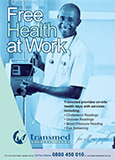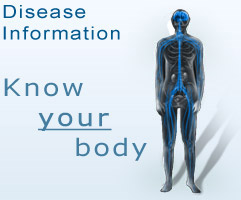Enuresis
What is enuresis?
Enuresis is the abnormal pattern of bed-wetting (involuntary urination during the night) in children older than five years. It may not be necessary to investigate this in children younger than five years, unless they have any difficulties as indicated below.
When to seek help
Parents should consult their doctor if their child has any difficulties, such as:
- a frequent urgent need to use the bathroom
- excessive urinating (frequency)
- extreme thirst during the day
- burning sensation during urination
- swelling in the feet or ankles.
The above may be signs of a more serious condition and require evaluation before any treatment for enuresis is attempted.
Treatment of enuresis
Whether or not a child has any of the abovementioned difficulties, his/her parents may seek medical advice at any time, or may first try behavioural therapy techniques. Motivational therapy and fluid management are best suited to younger children with enuresis. Most doctors don't recommend alarm devices or medicines until a child is at least seven years old.
Behavioural therapy
Parents may consider the following basic first-line recommendations for a child of any age:
- Remind the child every night to get out of bed and use the bathroom when he/she needs to urinate and to empty his/her bladder immediately before bedtime.
- Help the child locate the bathroom easily by using adequate night lights. Consider placing a portable potty seat in the child's bedroom if the bathroom is too far.
- Do not use diapers, training pants, or pull-up pants at home, since these may prevent a child from wanting to get out of bed, especially for those children older than eight years. They should rather be used for certain occasions, such as while the child is at day care and for overnight visits with family or friends.
- Protect the child's mattress with a waterproof sheet to avoid urine odour.
- Should bed-wetting occur during the night, encourage the child to go to the bathroom before changing into clean, dry pyjamas. A dry towel may be placed over the wet part of the bed, or the bed may be made in several layers, alternating a fitted sheet with a waterproof pad. This allows the child or parent to quickly and easily remove the wet items and avoid the need to re-make the bed. You may consider using a hairdryer to quickly dry the wet spot. Leave out dry pyjamas and clean towels in the child's bedroom, so that he/she may find them easily during the night, if necessary.
- Ask the child to help with cleaning the bed, including removing and washing the bedding. Also ensure that the child showers or bathes after bed-wetting to avoid infection and urine odour on the skin.
- Do not tease or allow siblings to tease a child who has wet the bed.
Motivational therapy
Motivational therapy involves keeping a record of the child's progress and rewarding him/her accordingly. The reward should be agreed upon in advance; for example, a sticker on a calendar to indicate one ‘dry night' which progresses to a favourite book for seven consecutive ‘dry nights'.
For younger children, motivational therapy is a good method to try first. More than 70% of children show significant improvement. The relapse rate (defined as more than two ‘wet nights' in two weeks) is approximately 5%.
Fluid management
Fluid management involves spreading the amount of fluids a child normally consumes over a 24-hour period. The goal is to prevent overfilling the bladder during the night.
The parent may keep a diary of the child's fluid intake, recording the amount of fluids consumed over a 24-hour period. Based on the daily total fluid intake, a schedule may be created to spread out fluid intake of the child throughout the morning, afternoon and evening. One recommendation is that 40% of the total fluid intake should be offered in the morning, 40% in the afternoon and only 20% in the evening. Any fluids taken during the evening should be caffeine-free.
Self-awakening
The aim of self-awakening therapy is to teach a child how to recognise when their bladder is full during the daytime, in the hope that they may recognise this feeling at night. It is best to try this method for children over the age of six.
Practice the self-awakening routine before bedtime every night. This is accomplished by having the child lie on the bed; pretend it is the middle of the night, and feel that the bladder is full. The child is asked to imagine that their bladder is saying, 'wake up before it's too late'. The child then goes to the bathroom to urinate.
Efforts should be made to practice self-awakening during the daytime. When the child senses the urge to urinate during the daytime, they should be encouraged to briefly go to their bedroom, lie down on the bed and pretend they are sleeping. They should lie still, think about their bladder being full, the need to get up and after a brief period of time get up and go to the bathroom to empty.
If this method doesn't work, you may try waking the child at least once during the night to use the bathroom. Use the smallest amount of prompting possible; progress from turning on the bedroom light, softly calling the child's name, touching his/her shoulder or face, or gently stirring him/her. Once awake, the child should be able to go to the bathroom without assistance.
Bladder training
Bladder training is useful for children who have a small bladder relative to their age (small bladder capacity). Small bladder capacity is common among children who have nocturnal enuresis (night-time bed-wetting). The intent of bladder training is to slowly increase a child's bladder capacity into the range expected for their age.
The aim of bladder training a child with a smaller bladder capacity is to increase the child's ability to hold their urine for increasingly longer intervals during the day. This is not intended to punish the child, but to help him/her become accustomed to set times or patterns to use the bathroom. For example, a child may start off by urinating every 30 minutes, and increase this time by 15 minutes every few weeks. The goal would be to progress up to urinating every two or three hours to reach the normal bladder capacity for their age. Measure and record the amount of urine from the child at particular times during the day and night to monitor his/her progress.
Up to 60% of children with nocturnal enuresis show significant improvement with bladder training. It is recommended above alarm devices or medicines.
Alarm therapy
An enuresis alarm is either a small sensor worn against the body or a large sensor-mat on the bed. When the sensor is activated (i.e. gets wet) the alarm is triggered with a sound, light or vibration, waking the child. Alarm therapy should be reserved for children aged seven or older and should be implemented only in a well-motivated and supportive family. The alarm alerts and sensitises the child to respond quickly to a full bladder and it has been found that nocturnal bladder capacity increases in children responding to this method.
Please note that although an enuresis alarm is the most effective method used to control bed-wetting; it should be the parent's last option, as they are moderately priced and require the child and parent to be highly motivated.
As soon as the child is ready, he/she should be placed in charge of their alarm, and should test it every night before sleeping. The child should follow a sequence of events in the case that the alarm is triggered:
- Turn off the alarm, go to the bathroom to urinate and rinse him/herself.
- Return to the bedroom to change their bedding and clothing (with the parent's help if necessary).
- Clean or replace the sensor.
- Reset the alarm and return to bed.
Keep a diary of the child's bed-wetting and reward the child for ‘dry nights' and for successful use of the alarm sequence.
As alarm therapy begins, some children may not awaken when the alarm goes off. A parent should wake the child initially, though most children will eventually learn to awaken on their own. The alarm should be used continuously until the child has three to four weeks of consecutive ‘dry nights'. This usually takes three to four months, but may take up to between five weeks and six months. The alarm sequence may be restarted if relapse occurs.
References
1. Developmental problems. The Merck Manual of Diagnosis and Therapy: Paediatrics. Section 19. Chapter 262.
2. EVIDENCE BASED MEDICINE GUIDELINES. 1 June 1998. A child psychiatrist's view of enuresis.
3. EVIDENCE BASED MEDICINE GUIDELINES. 3 April. Enuresis in a child.
4. EVIDENCE SUMMARIES. 2 October 2003. Alarms for nocturnal enuresis in children.
5. EVIDENCE SUMMARIES. 30 March 2004. Complex behavioural and educational interventions for nocturnal enuresis in children.
6. EVIDENCE SUMMARIES. 8 August 2003. Simple behavioural and physical interventions for nocturnal enuresis in children.
7. EVIDENCE SUMMARIES. Desmopressin for nocturnal enuresis in children.
8. EVIDENCE SUMMARIES. Desmopressin or alarm for nocturnal enuresis in children.
9. EVIDENCE SUMMARIES. Tricyclic and related drugs for nocturnal enuresis in children.
10. SOUTH AFRICA MEDICINES FORMULARY. 6th Edition.
11. TRY FOR DRY INFORMATION CENTRE. USA.
Website: http://www.tryfordry.com/enuresis_algorithm.htm
12. VAN DYK, JC et al. 2003. South African guidelines for the management of nocturnal enuresis. South African Medical Journal. 93(5):338-40.
 TransmedBanner4.jpg)

